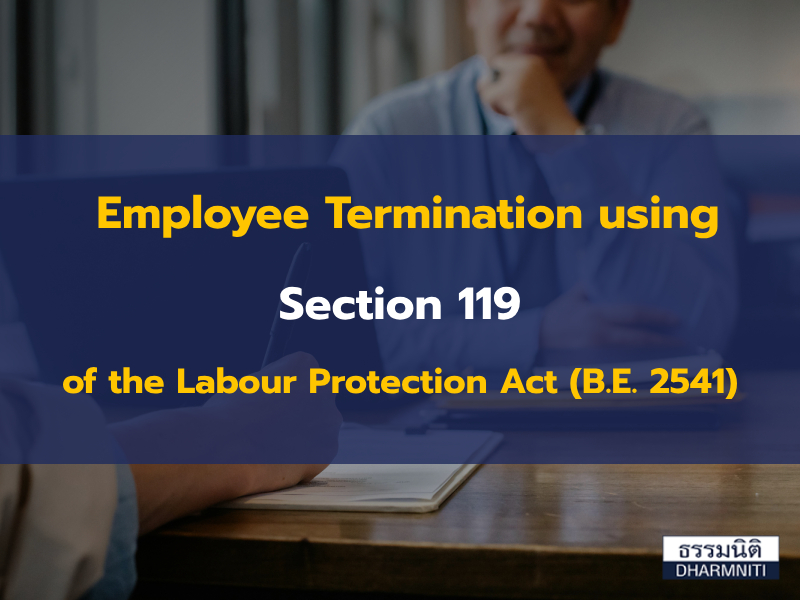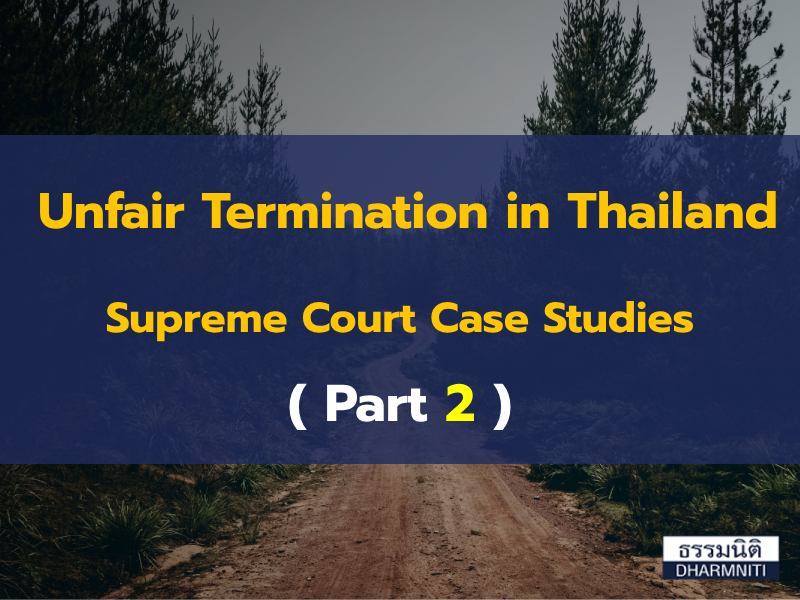Occupational Health & Safety in Relation to Heat, Light & Noise
In this article, we shall discuss employer’s occupational health & safety (OH&S) obligations in relation to heat, light and noise as specified in Ministerial Regulations which were issued in 2006. The article shall discuss several matters including minimum safety standards for each risk area as well as details relating to safety/protective equipment which employers must provide to affected staff in certain circumstances.
Ministerial Regulation On The Prescribing of Standards for the Administration & Management of Occupational Safety, Health And Environment in relation to Heat, Light and Noise B.E. 2549 (2006)
This Regulation sets out a number of standards which employers must comply with in relation to their staff working with heat, light and noise. A summary of these minimum requirements is detailed below:
Standards Relating to Heat:
According to this Ministerial Regulation employers are required to control and maintain heat levels within the workplace so that they don’t exceed the following standards:
- In relation to ‘Light Work’ such as office work (typing etc), clerical work, data recording (requiring a metabolic rate not exceeding 200 kilocalories per hour), the law requires that the average heat level in the workplace does not exceed 34 degrees Celsius based on wet bulb globe temperature.[1]
- With respect to ‘Medium Work’ which is characterized as work which utilizes a medium amount of force or uses energy at a metabolic rate of between 200-350 kilocalories per hour such as work involving lifting, towing, pulling, pushing, or nailing, then the law requires that the
average heat level in the workplace does not exceed 32 degrees Celsius based on wet bulb globe temperature.
- For ‘Heavy Work’ such as heavy lifting, jack hammering, shoveling etc which uses energy at a metabolic rate that exceeds 350 kilocalories per hour, the law requires that the average heat level in the workplace does not exceed 30 degrees Celsius based on wet bulb globe temperature.
If the heat level in the workplace exceeds the standards as mentioned above then the employer is under an obligation to engineer the workplace such that the heat level is kept under the required benchmarks, however, if such remedial engineering works are not able to sufficiently reduce the temperature then the employer must post warning signs for employees and provide the employees with suitable protective equipment to wear in the workplace such as clothes, socks and gloves for heat protection.
Standards Relating to Light:
Employers must use or provide a curtain, light-filter film or other suitable measures to protect their employees’ eyes from direct or reflective light which comes from an intense light source or the sun in the course of their work. If it is not possible for an employer to provide a curtain, filter film or other suitable measures to protect their employee’s eyes then the employer is required to provide their staff with safety glasses which must be made of a material which reduces light glare to a level which is not harmful to eyesight. The frame of such glasses must be lightweight and must have a soft shield.
For employees who work in dark workplaces such as caves, tunnels or underground mines, employers are required to provide their employees with a safety hat equipped with a lighting device that projects light forward with sufficient light intensity for 3 meters range (minimum 20 Lux, a Lux is a unit of light measurement where the area is also taken into account) or they must otherwise provide lighting devices suitable for the condition or nature of the work.
Standards Relating to Noise:
The Ministerial Regulations set out noise level standards which employers must comply with, these are set out in a table annexed to the Regulations. If the workplace area exceeds the noise standards as set out in the table then the employer is under an obligation to order their employees in that affected area to stop working until the noise level is improved or remedied. If the noise level cannot be improved or fixed so that they don’t exceed the prescribed standard in the workplace then the employer must arrange for the staff who works in this area to wear:
- ear plugs made of plastic, rubber, or other soft non-irritant material which is capable of reducing noise to not less than 15 decibel A; or
- ear muffs made of plastic, rubber, or other soft non-irritant material which is capable of reducing noise to not less than 25 decibel A.
Measurement & Analysis of Working Condition Obligations on Employers
Employers are required to conduct measurements and analysis of working conditions in their workplace in relation to heat, light and noise levels. The report must be prepared based on the results of such analysis and must be certified by either a safety office (professional level) or a person who holds not lower than a Bachelor’s Degree in Occupational Health. The report once prepared must be kept at the workplace so that it can be inspected by labour inspectors during working hours with a copy of the report to be submitted to the Director General of the Department of Labour Protection and Welfare or their delegate within 30 days from when the measurements were taken in the workplace.
SDharmniti Law Office Co., Ltd.
2/2 Bhakdi Building 2nd Floor, Witthayu Road, Lumphini, Pathumwan, Bangkok 10330
Tel: (66) 2680 9777 Fax: (66) 2680 9711
Email: ryan@dlo.co.th or info@dlo.co.th
Writer: Ryan Crowley- Foreign Services Manager
[1] Wet bulb globe temperature is a type of apparent temperature used to estimate the effect of temperature, humidity, wind speed (wind chill), and visible and infrared radiation (usually sunlight) on humans.




 Except where otherwise indicated, content on this site is allowed to be used under
Except where otherwise indicated, content on this site is allowed to be used under